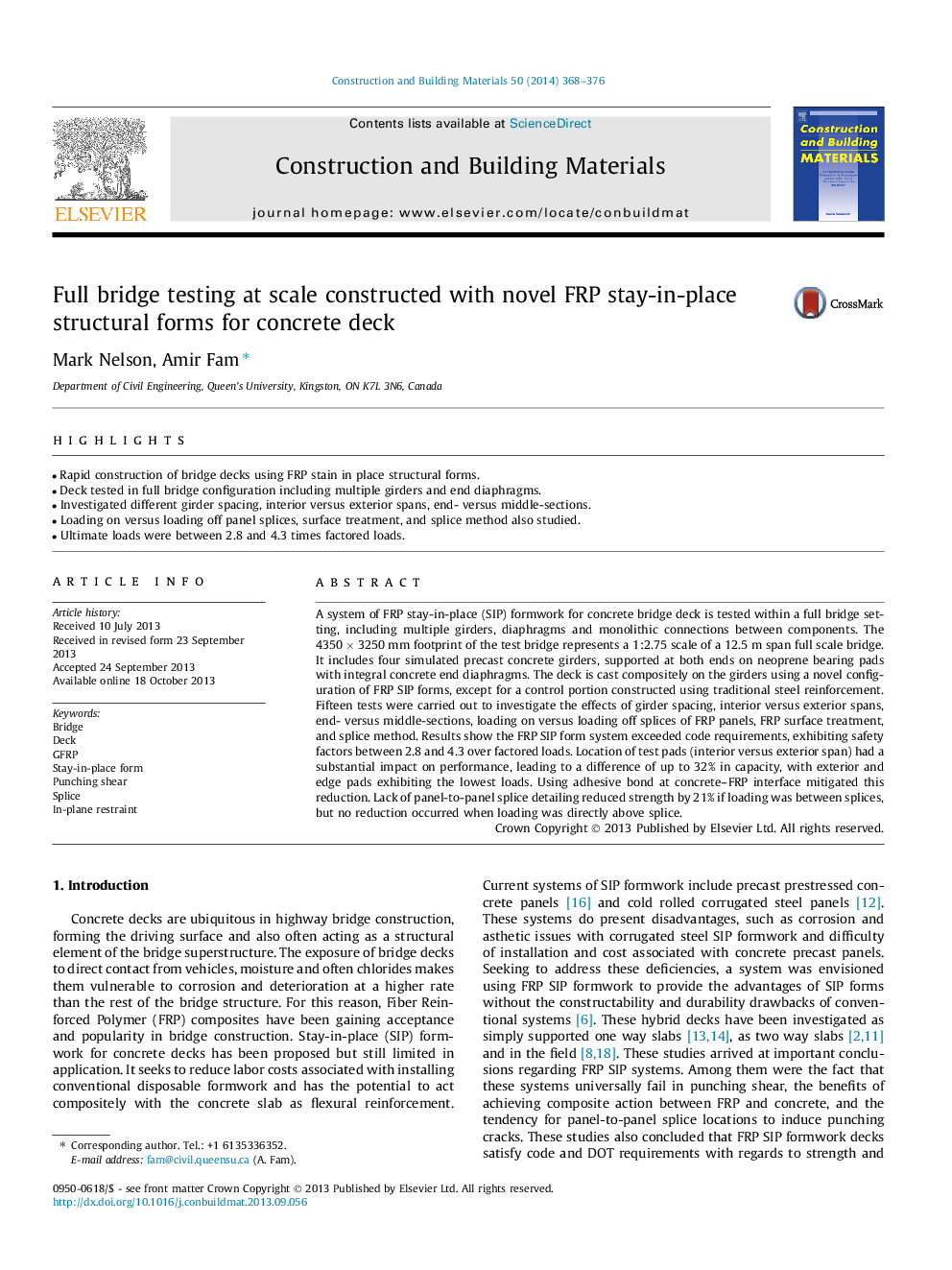| کد مقاله | کد نشریه | سال انتشار | مقاله انگلیسی | نسخه تمام متن |
|---|---|---|---|---|
| 257895 | 503602 | 2014 | 9 صفحه PDF | دانلود رایگان |

• Rapid construction of bridge decks using FRP stain in place structural forms.
• Deck tested in full bridge configuration including multiple girders and end diaphragms.
• Investigated different girder spacing, interior versus exterior spans, end- versus middle-sections.
• Loading on versus loading off panel splices, surface treatment, and splice method also studied.
• Ultimate loads were between 2.8 and 4.3 times factored loads.
A system of FRP stay-in-place (SIP) formwork for concrete bridge deck is tested within a full bridge setting, including multiple girders, diaphragms and monolithic connections between components. The 4350 × 3250 mm footprint of the test bridge represents a 1:2.75 scale of a 12.5 m span full scale bridge. It includes four simulated precast concrete girders, supported at both ends on neoprene bearing pads with integral concrete end diaphragms. The deck is cast compositely on the girders using a novel configuration of FRP SIP forms, except for a control portion constructed using traditional steel reinforcement. Fifteen tests were carried out to investigate the effects of girder spacing, interior versus exterior spans, end- versus middle-sections, loading on versus loading off splices of FRP panels, FRP surface treatment, and splice method. Results show the FRP SIP form system exceeded code requirements, exhibiting safety factors between 2.8 and 4.3 over factored loads. Location of test pads (interior versus exterior span) had a substantial impact on performance, leading to a difference of up to 32% in capacity, with exterior and edge pads exhibiting the lowest loads. Using adhesive bond at concrete–FRP interface mitigated this reduction. Lack of panel-to-panel splice detailing reduced strength by 21% if loading was between splices, but no reduction occurred when loading was directly above splice.
Journal: Construction and Building Materials - Volume 50, 15 January 2014, Pages 368–376